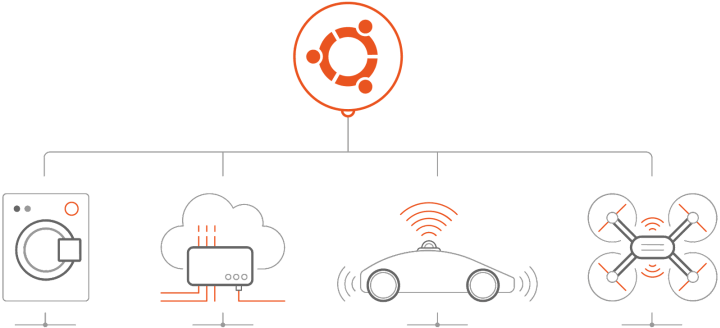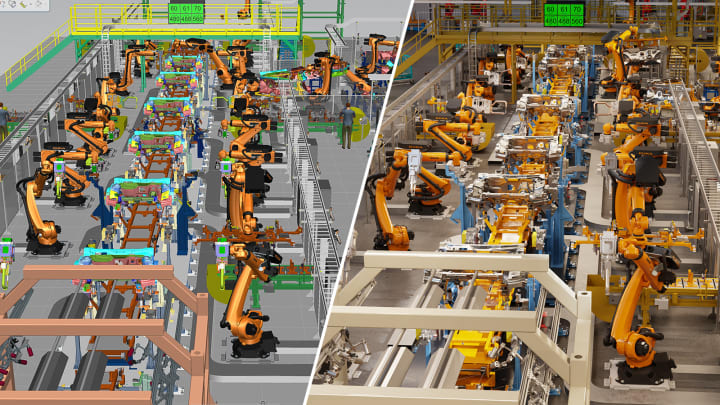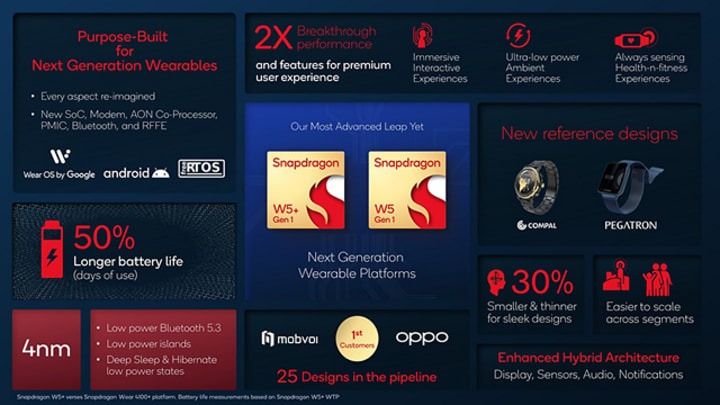The State of IoT – June & July 2022
Edoardo Barbieri
on 29 July 2022
Tags: Embedded , IoT , stateofiot
Welcome to the June & July combined edition of the monthly State of IoT series.
Let’s dive straight into the most prominent news across the IoT landscape from the last two months.
Canonical releases Ubuntu Core 22 for embedded
Ubuntu Core is an app-centric embedded operating system based on Ubuntu. Developers can focus on building apps while Canonical provides and maintains low-level components.
Ubuntu Core enables advanced security capabilities out-of-the-box, and Canonical supports devices running Ubuntu Core for up to ten years, delivering security patches and bug fixes.
Last June, Canonical released Ubuntu Core 22, built on the foundations of Ubuntu 22.04 LTS (Jammy Jellyfish).
Ubuntu Core 22 ships with support for MicroK8s in embedded environments. Kubernetes is an orchestration platform for containerised applications which abstracts compute, networking and storage resources and manages container lifecycle in a reliable and scalable way. MicroK8s is a lightweight Kubernetes distribution for clouds, workstations, edges and IoT devices. MicroK8s runs all Kubernetes services natively. It includes all dependencies in a single package, and it gets transparent mission-critical security updates. Combining Ubuntu Core and MicroK8s creates an easily-deployed embedded Kubernetes optimised for size and performance in IoT and Edge applications.
Among the most noteworthy features of the latest release are the option to restore a device to its initial state via a factory reset and quota groups to set CPU and memory resource limits.
Siemens unveils Xcelerator for digital transformation
Siemens announced Xcelerator, an open digital business platform to accelerate digital transformation for its customers and partners.
Siemens Xcelerator consists of an evolving marketplace and comprehensive, curated portfolio of IoT-enabled hardware, software and services. Technical and commercial governance will make it easier for Siemens’ partners to come on board and accelerate their path towards a faster and more scalable digital transformation.
The digital business platform rests on four pillars, interoperability, flexibility, openness and being available as-a-service.
The hardware is already IoT-enabled, and Siemens promises combining several applications from Xcelerator will feel like plug and play. Stating partners and clients will be free to use applications or products from other companies or the open-source community, the Xcelerator portfolio will be interoperable, connected to the cloud, and will work with standard APIs.
Siemens is committed to lowering the barrier to entry by providing companies with a pay-as-you-go model to use the software as a service. Big players like Accenture, AWS, and Microsoft have already been certified, but also smaller ones whose offerings can be found in the Siemens Xcelerator marketplace.
Siemens and NVIDIA partner to advance the industrial metaverse
Siemens and NVIDIA are partnering to advance industrial digital twins in the metaverse, opening a new era of automation for manufacturing.
NVIDIA Omniverse is a large-scale, full-fidelity virtual world engine for the industrial metaverse. Omniverse, based on the open standards of Universal Scene Description, connects a wide range of software tools and users with physically-accurate visualisations, realistic physics and RTX Accelerated Ray Tracing.
On the other hand, Siemens Xcelerator offers best-in-class software for digital manufacturing, collaboration, design and industrial operations. The platform uses edge-enabled devices to collect real-time IoT data from the digital twin.
By connecting the NVIDIA Omniverse and the Siemens Xcelerator ecosystem, the two companies aim to expand the use of digital twin technologies to bring a new level of speed and efficiency to solve design, production and operational challenges.
The partnership will help manufacturers respond to customers’ demands, reduce downtime and adapt to supply-chain uncertainties while achieving sustainability and production targets.
The connected platforms, running on GPU-accelerated systems from edge to cloud, unlock capabilities in the factory and on the shop floor. Innovative solutions can be tested and validated using the digital twin across thousands of scenarios and edge cases, eliminating the need for physical prototypes, reducing critical downtime and increasing manufacturing agility.
Together, NVIDIA Omniverse and Siemens Xcelerator are bringing open collaboration to industrial automation, enabling full-fidelity digital twins to drive a new level of speed and agility in the software and AI-driven digital transformation era.
Qualcomm announces a next-gen wearable platform
Qualcomm revealed the Snapdragon W5+ Gen 1 Wearable Platform, purpose-built for next-generation wearables.
The Snapdragon W5+ features ultra-low power for extended battery life. By incorporating low-power techniques at every level, e.g. bringing 4nm processors technology at the transistors level, consumers get 50% longer battery life for typical DOU scenarios.
Qualcomm’s focus is providing breakthrough performance for a premium user experience. With Quad Core CPU in the SoC, advanced GPU, upgraded memory, and new audio and video subsystems, Qualcomm designed the wearable platform for high performance. The Snapdragon W5+ even features a highly integrated co-processor with a high-performance M55 core.
The next-gen wearable platform supports immersive interactive experiences like responsive app scrolling, smooth video playback, 3D maps for navigation, real-time image recognition, 2-way video calling and an engaging voice assistant for device control.
Despite the increased performance and added functionalities, the W5+ features a high integration for innovative designs by reducing its package size.
Compared to the last generation Snapdragon Wear 4100+, the W5+ Gen 1 features a 40% reduction in core PCB surface area, 35% for the chipset and 30% for the SoC. Consumers will thus benefit from the smaller thickness and circumference for smaller wrists and sleeker designs.
Microsoft unveils AirSim for autonomous flight
In 2017 Microsoft created AirSim, an open-source simulation platform for AI research and experimentation with drones and cars. This July, Microsoft announced the upcoming release of a new simulation platform and the archive of the original 2017 AirSim.
The new Microsoft Project AirSim is an end-to-end platform for safely developing and testing aerial autonomy through simulation and is designed to empower engineers to unlock the power of autonomous agents quickly. AirSim gives customers a launch pad to build, test, and validate uncrewed aviation solutions and deploy them safely. Users can rapidly fine-tune autonomy blocks and achieve good performance for various aerial robotic tasks such as visual odometry, positioning, and precision landing. AirSim, currently in limited preview, uses real-world synthetic and hybrid data to simulate planet-scale environments under countless conditions.
Building ML/AI models from scratch is time-consuming and resource intensive. Project AirSim comes with pre-trained, customizable ML models and AI building blocks specifically designed for aerial scenarios. Using realistic sensor models and pre-trained neural networks, AirSim gives customers a programmable platform to accelerate the training of aerial agents.
Microsoft expands certification program for IoT devices
A few years ago, Microsoft launched Secured-Core to raise the security posture in the PC and server space. Recognizing the advent of IoT and the proliferation of connected devices, last July Microsoft extended the Secured-Core label into the IoT space.
Certification programs help hardware manufacturers promote their devices and showcase their features. With thousands of device manufacturers playing an active role in the ecosystem, Edge Secured-Core aims to simplify how customers can identify and know their IoT and edge devices will meet and maintain specified configurations in a secured posture.
The extended certification comprises hardware and software requirements and focuses on a few principles.
Among those are hardware-based device identity (TPM) and the provisioning of protection for data-at-rest and in transit. Another pillar of the Edge Secured-Core certification is being capable of enforcing system integrity, which comprises developing requirements around DMA, memory and firmware protection. Microsoft further mentioned firmware hardening and vulnerability detection via Azure Defender and security throughout the device lifecycle as key components of its renewed certification program.
Stay tuned for more IoT news
We will soon be back with next month’s summary of IoT news. Meanwhile, join the conversation on IoT Discourse to discuss everything related to IoT and tightly connected, embedded devices. To get the news first, sign up for our newsletter.
Further reading
Why is Linux the OS of choice for IoT devices? Find out with the official guide to Linux for embedded applications.
Working on a new IoT project, but unsure which OS to pick? Learn about the trade-offs between Yocto and Ubuntu Core.

IoT as a service
Bring an IoT device to market fast. Focus on your apps, we handle the rest. Canonical offers hardware bring up, app integration, knowledge transfer and engineering support to get your first device to market. App store and security updates guaranteed.

IoT app store
Build a platform ecosystem for connected devices to unlock new avenues for revenue generation. Get a secure, hosted and managed multi-tenant app store for your IoT devices.





